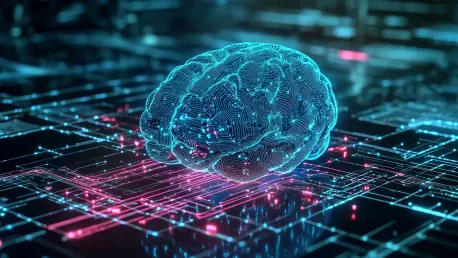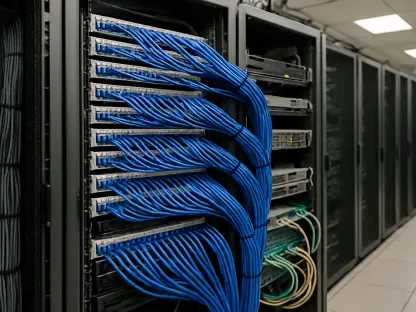The rapid expansion of artificial intelligence (AI) has driven significant advancements and innovations in data center design and testing, pushing the boundaries of what these infrastructures can achieve. As the necessity for improved AI processing capacity surges, data centers must adapt to the complex demands of contemporary AI frameworks, heralding a new era of system-level insights and comprehensive testing solutions, which are paramount for optimal performance and interoperability.
The Keysight Artificial Intelligence (KAI) Portfolio
Keysight Technologies has positioned itself at the forefront of this transformation with the launch of its KAI portfolio, a set of tools crafted to enhance the operations of AI data centers. These tools cover a wide range of functions, including a data center builder designed to accurately emulate large-scale AI data center workloads, solutions for AI chip development, and tools focused on optimizing power and energy management. The primary objective of the KAI portfolio is to address the challenges associated with scaling AI processing capacity, optimizing overall system performance, and pinpointing performance issues, which are often missed during the testing of individual components.
The data center builder within the KAI portfolio is particularly noteworthy for its capability to emulate extensive workloads with high fidelity. By replicating real-world scenarios, this tool enables data center operators to identify potential bottlenecks and inefficiencies in the system. Additionally, the tools designed for AI chip development assist in creating more robust and efficient hardware, further contributing to the overall performance of AI data centers. Moreover, the solutions aimed at power and energy management are critical for maintaining sustainable operations and reducing operational costs.
System-Level Insights and Testing
One of the fundamental aspects of Keysight’s strategy is its focus on system-level insights as opposed to solely relying on component-level validation. This comprehensive approach ensures that AI data centers not only meet industry standards but also achieve interoperability, efficiency, and real-world performance. Ram Periakaruppan, VP, and GM of Network Test and Security Solutions at Keysight, emphasized the importance of integrating traffic emulation, network compliance validation, and adherence to the latest industry standards, allowing a holistic emulation of all aspects of data center performance.
System-level insights are crucial for understanding the complex interactions between various components within a data center. By testing these interactions under real-world conditions, data center operators can ensure that the infrastructure performs optimally, even under the most demanding workloads. This approach also helps in identifying and mitigating potential issues that could affect the overall performance and reliability of the AI data center, ensuring the seamless operation of AI applications and services.
The Role of Network Evolution
The rapid evolution of network infrastructure is another driving force behind the innovation in AI data centers. Alan Weckel, founder and technology analyst at 650 Group, highlighted the importance of accelerating the design and deployment of next-generation AI/ML Application-Specific Integrated Circuits (ASICs), which are expected to drive record shipments of high-speed ports, including 800GE and 1.6T. This rapid innovation cycle underscores the industry’s dedication to meeting the escalating computational demands of AI applications and ensuring that data centers can handle the increasing data throughput.
The transition from traditional network models to next-generation networks is essential for supporting the high bandwidth and low latency requirements of AI applications. As the industry pushes forward, the implementation of advanced network technologies will be critical for maintaining seamless communication between AI systems and ensuring the efficient processing of large volumes of data. This network evolution also opens up new possibilities for AI data centers, enabling them to support more complex and resource-intensive AI tasks.
Contributions from Industry Leaders
In addition to Keysight Technologies, several other companies are making significant contributions to the test and measurement (T&M) sector, further driving the innovation in AI data centers. Rohde & Schwarz has integrated electromagnetic signal detection, location, and analysis capabilities into drones developed by UAV company Milton for military applications. These drones are designed to identify signals such as suspicious radio communications, jammers, electromagnetic warfare devices, or broadcasts to enemy drones, enhancing the effectiveness of military operations. Rohde & Schwarz has also updated its Elektra EMC test software to support all current Electromagnetic Compatibility (EMC) standards across various sectors such as commercial, wireless, military, automotive, and aerospace.
Viavi Solutions is another key player in the T&M sector, having enhanced its ONE-1600 test platform to address the growing pressures for networks to adopt 1.6 Tb/s speeds in response to the increasing demands of AI and other high-speed networking needs. Tom Fawcett, SVP, and GM of lab and production at Viavi, mentioned that the ONE-1600 was the first to market with 1.6 Tb/s testing capabilities and has successfully inter-operated with numerous 1.6 Tb/s module vendors. This advancement is expected to accelerate the adoption rate of 1.6 Tb/s optical connectivity, meeting the high-performance requirements of modern AI data centers.
Innovations in Test and Measurement Tools
Introspect Technology has also introduced innovative new products such as the RS## Remote Sampling Head, a multi-channel active probe compatible with any 50 Ohm oscilloscope. This product is designed to provide a clean signal probing setup, which is critical for addressing the measurement and debugging challenges in high-speed interfaces, such as MIPI, DDR, and LPDDR. These interfaces are essential for modern digital designs and the proliferation of AI applications. The RS## Remote Sampling Head exemplifies the industry’s recognition of the need for comprehensive, system-level validation and optimization to support the exponential growth in AI and high-speed networking demands.
The cumulative advancements made by these companies reflect a robust and rapidly evolving landscape within the T&M sector. Driven by the exponential growth in AI processing and networking demands, the focus on comprehensive system-level validation and optimization has become a common theme, underscoring the industry’s acknowledgment that testing individual components alone is insufficient to meet the complex requirements of modern AI data centers. These technological strides are integral to ensuring the efficiency, reliability, and scalability of AI infrastructures.
Paving the Way for Future Innovation
The rapid growth of artificial intelligence (AI) has fostered remarkable advancements and innovations in data center design and testing, pushing the limits of what these infrastructures can achieve. With the increasing need for enhanced AI processing power, data centers must adapt to the complex requirements of modern AI frameworks. This evolution marks the beginning of a new era characterized by system-level insights and thorough testing solutions, which are essential for achieving optimal performance and ensuring interoperability. As AI technology continues to evolve, the demands on data centers will only grow more complex, necessitating continuous adaptation and innovation in both their design and testing methodologies. By staying ahead of these changes, data centers can provide the robust and efficient infrastructure needed to support the next generation of AI advancements. This dynamic landscape offers many opportunities for innovation, ensuring that data centers remain a critical component in the ever-expanding field of artificial intelligence.









